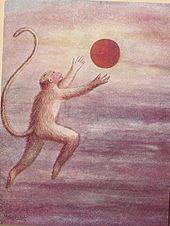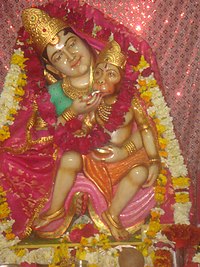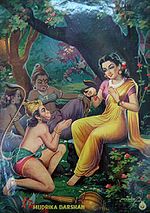No products
Religious Art
- Pocket & Wrist Watches
- Music Instruments
- Brass Band & Woodwinds
- Ethnic Indian Instruments
- Guitars, Mandolins & Strings
- Violin, Viola & Cello Fittings
- World Percussion
- Nautical Brass
- Collectible Damascened Knives
New products
-

Kamala Harris 2024 Presidential Campaign Portrait Art Watch. Solid Brass Democratic Election Collectible Americana.
large format 40 mm black solid brass casing with stainless steel back...
$ 134.48 -

Kamala Harris & Tim Walz 2024 Presidential Campaign Watch. Blues. Solid Brass Democratic Election Collectible Americana Watch.
large format 40 mm black solid brass casing with stainless steel back...
$ 126.33 -

Kamala Harris 2024 Presidential Campaign Slogan Art Watch in Colors of the Stars & Stripes. Solid Brass Democratic Election Collectible Americana. Let's Win This!
large format 40 mm black solid brass casing with stainless steel back...
$ 134.48 -

Forward! Iconic Kamala Harris 2024 Presidential Campaign Slogan Art Watch in Colors of the Stars & Stripes. Solid Brass Democratic Election Collectible Americana.
large format 40 mm black solid brass casing with stainless steel back...
$ 134.48 -

Choose Courage! Iconic Kamala Harris 2024 Campaign Art Solid Brass Watch
large format 40 mm black solid brass casing with stainless steel back...
$ 121.58
Colorful HANUMAN Maruti Hinduism Kitsch Religious Art Wrist Watch
REL-003
New product
- impressive 40 mm solid brass casing with stainless steel back
- premium 2040 quartz movement.
- original parchment art acrylic dial
- waterproof bracelet with brass buckle
- 1 year warranty
More info
Hanuman (IPA: hʌnʊˈmɑn) is a Hindu deity, who was an ardent devotee of Rama according to the Hindu legends. He is a central character in the Indian epic Ramayana and its various versions. He also finds mentions in several other texts, includingMahabharata, the various Puranas and some Jain texts. A vanara (ape-like humanoid), Hanuman participated in Rama's war against the demon king Ravana. Several texts also present him as an incarnation of Lord Shiva. He is also considered the son of Vayu, who according to several stories, played a role in his birth.
The Sanskrit texts mention several legends about how Hanuman got his name. One legend is that Indra, the king of the deities, struck Hanuman's jaw during his childhood (see below). The child received his name from the Sanskrit words Hanu ("jaw") and -man (or -mant, "prominent" or "disfigured"). The name thus means "one with prominent or disfigured jaw". Another theory says the name derives from the Sanskrit words Han ("killed" or "destroyed") and maana (pride); the name implies "one whose pride was destroyed".[1] Some Jain texts mention that Hanuman spent his childhood on an island called Hanuruha, which is the origin of his name.
According to one theory, the name "Hanuman" derives from the proto-Dravidian word for male monkey (ana-mandi), which was later Sanskritized to "Hanuman" (see historical development below). Linguistic variations of "Hanuman" include Hanumat, Anuman (Tamil), Anoman (Indonesian), Andoman (Malay) and Hunlaman (Lao). Other names of Hanuman include:
- Anjaneya,Hanumantha (Kannada),
- Anjaneya, Anjaniputra or Anjaneyudu (Telugu), all meaning "the son of Anjana".
- Anjaneyar, used widely by rural Tamilians.
- Kesari Nandan ("son of Kesari")
- Maruti ("son of Marut") or Pavanputra ("son of Pavan"); these names derive from the various names of Vayu, the deity who carried Hanuman to Anjana's womb
- Bajrang Bali, "the strong one (bali), who has limbs (anga) as hard as a vajra (bajra)"; this name is widely used in rural North India.[1]Bajrang Bali also implies "the strong one (bali), who is orange (Baj) or saffron colored
- Sang Kera Pemuja Dewa Rama, Hanuman, the Indonesian for "The mighty devotee ape of Rama, Hanuman"
Epithets and attributes
In addition, Hanuman has received several epithets, including:
- Manojavam, the one who is swift as mind (appears in Rama Raksha Stotra)
- Maarutatulyavegam, the one who has a speed equal to the wind God (appears in Rama Raksha Stotra)
- Jitendriyam, the one who has complete control on his senses (appears in Rama Raksha Stotra)
- Buddhimataamvarishtham, the one who is most senior among intellectuals (appears in Rama Raksha Stotra)
- Vaataatmajam, the one who is the son of wind God (appears in Rama Raksha Stotra)
- Vaanarayoothamukhyam, the one who is the chief of vanara army (appears in Rama Raksha Stotra). Similar in meaning to - Vaanaraanaamadheesham.
- Shreeraamdootam, the one who is the messenger of Rama (appears in Rama Raksha Stotra).
- Atulit Bal Dhaamam, the one who is the repository of incomparable strength.
- Hemshailaabh Deham, the one whose body resembles a golden mountain.
- Danujvan Krushanum, the one who is the destroyer of forces of demons.
- Gyaaninaam Agraganyam, the one who is considered foremost among knowledgeable beings.
- Sakal Gun Nidhaanam, the one who is the repository of all the virtues and good qualities.
- Raghupati Priya Bhaktam, the one who is the dearest of all devotees to Lord Rama.
- Sankat Mochan, the one who liberates (moca) from dangers (sankata)[1]
In the 3rd chapter of Kishkindha Kaanda of Valmiki Ramayana,[3] Rama describes many attributes of Hanuman's personality. Summarized as follows:
- Ablest sentence maker.
- Knower of all Vedas and Scriptures.
- Scholar in nine schools of grammars.
- Possessing faultless speech and facial features
Historical development
The word "Vrsakapi" or "Vrishakapi", later used as an epithet for Hanuman, is mentioned in Rigveda (X:96). Some writers, such as Nilakantha (author of Mantra Ramayana) believe that the Vrishakapi of Rigveda alludes to Hanuman. However, other scholars believe that Hanuman is not mentioned in the Vedic mythology: the "Vrsakapi" of Rigveda refers to another deity or is a common name for the monkeys.
F.E. Pargiter (1852-1927) theorized that Hanuman was a proto-Dravidian deity, and the name "Hanuman" was a Sanskritization of the Old Tamil word Aan-mandhi ("male monkey"). The Hindi writer Ray Govindchandra (1976) endorsed this view, and stated that the proto-Indo-Aryans must have invented a Sanskrit etymology for the deity's name, after they accepted Hanuman in their pantheon.[6] Murray Emeneau disagrees with this theory, and states that the word mandi, as attested in Sangam literature, can refer only to a female monkey, and therefore, the word ana-mandi makes no semantic sense. Camille Bulcke, in his Ramkatha: Utpatti Aur Vikas ("The tale of Rama: its origin and development"), traces the origins of Hanuman worship to the pre-Aryan, pre-Dravidian aboriginal tribes of Central India. According to him, Valmiki's Ramayana was based on older tribal ballads.
Hanuman came to be regarded as an avatar (incarnation) of Shiva by the 10th century CE (this development possibly started as early as in the 8th century CE).[4] Hanuman is mentioned as an avatar of Shiva or Rudra in the Sanskrit texts like Mahabhagvata Purana, Skanda Purana, Brhaddharma Purana and Mahanataka among others. This development might have been a result of the Shavite attempts to insert their ishta devata (cherished deity) in the Vaishnavite texts, which were gaining popularity. The 17th century Oriya work Rasavinoda by Divakrsnadasa goes on to mention that the three gods – Brahma, Vishnu and Shiva – combined to the take the form of Hanuman.
Hanuman became more important in the medieval period, and came to be portrayed as the ideal devotee (bhakta) of Rama. His characterization as a lifelong brahmachari(celibate) was another important development during this period.[4] The belief that Hanuman's celibacy is the source of his strength became popular among the wrestlers in India. The celibacy or brahmacharya aspect of Hanuman is not mentioned in the original Ramayana.
Birth and childhood
Hanuman was born to the humanoid creatures called the vanaras. His mother Anjana was an apsara who was born on earth as a female vanara due to a curse. She would be redeemed from this curse on her giving birth to a son. The Valmiki Ramayana states that his father Kesari was the son of Brihaspati and that Kesari also fought on Rama's side in the war against Ravana.[10] Anjana and Kesari performed intense prayers toShiva to get a child. Pleased with their devotion, Shiva granted them the boon they sought. Hanuman, in another interpretation, is the incarnation or reflection of Shiva himself.
Hanuman is often called the son of the deity Vayu; several different traditions account for the Vayu's role in Hanuman's birth. One story mentioned in Eknath's Bhavartha Ramayana (16th century CE) states that when Anjana was worshiping Shiva, the King Dasharatha of Ayodhyawas also performing the ritual of Putrakama yagna in order to have children. As a result, he received some sacred pudding (payasam) to be shared by his three wives, leading to the births of Rama, Lakshmana, Bharata, and Shatrughna. By divine ordinance, a kite snatched a fragment of that pudding and dropped it while flying over the forest where Anjana was engaged in worship. Vayu, the Hindu deity of the wind, delivered the falling pudding to the outstretched hands of Anjana, who consumed it. Hanuman was born to her as a result.[10][12] Another tradition says that Anjana and her husband Kesari prayed Shiva for a child. By Shiva's direction, Vayu transferred his male energy to Anjana's womb. Accordingly, Hanuman is identified as the son of the Vayu.
Another story of Hanuman's origins is derived from the Vishnu Purana and Naradeya Purana. Narada, infatuated with a princess, went to his lordVishnu, to make him look like Vishnu, so that the princess would garland him at swayamvara (husband-chosing ceremony). He asked for hari mukh (Hari is another name of Vishnu, and mukh means face). Vishnu instead bestowed him with the face of a vanara. Unaware of this, Narada went to the princess, who burst into laughter at the sight of his ape-like face before all the king's court. Narada, unable to bear the humiliation, cursed Vishnu, that Vishnu would one day be dependent upon avanara. Vishnu replied that what he had done was for Narada's own good, as he would have undermined his own powers if he were to enter matrimony. Vishnu also noted thatHari has the dual Sanskrit meaning of vanara. Upon hearing this, Narada repented for cursing his idol. But Vishnu told him not repent as the curse would act as a boon, for it would lead to the birth of Hanuman, an avatar of Shiva, without whose help Rama (Vishnu's avatar) could not kill Ravana.
Birth place
Multiple places in India are claimed as the birthplace of Hanuman.
- According to one theory, Hanuman was born on 'Anjaneya Hill', in Hampi, Karnataka.[13] This is located near the Risyamukha mountain on the banks of the Pampa, where Sugreeva and Rama are said to have met in Valmiki Ramayana's Kishkinda Kanda. There is a temple that marks the spot.
- It is also said that Kaithal, Haryana is the birthplace of Lord Hanumana and there is a temple constructed at that place known as "Anjani Tila" among the residents of Kaithal.
- Anjan, a small village about 18 km away from Gumla, houses "Anjan Dham", which is said to be the birthplace of Hanuman.[14] The name of the village is derived from the name of the goddess Anjani, the mother of Hanuman. Aanjani Guha (cave), 4 km from the village, is believed to be the place where Anjani once lived. Many objects of archaeological importance obtained from this site are now held at the Patna Museum.
- The Anjaneri (or Anjneri) mountain, located 7 km from Trimbakeshwar in the Nasik district, is also claimed as the birthplace of Hanuman.[15]
- According to Anjan Dham, Hanuman was born on Lakshka Hill near Sujangarh in Churu district, Rajasthan.[16]
- A cave in a hill near Gokarna, one of the oldest temple towns of India, is also said to be the birthplace of Hanuman. This cave has had a Hanuman temple for a long time. Gokarna, situated in west coast of Karnataka, is known for Atma Linga of Shiva, installed by Ganapathi to save it from the hands of Ravana long before Ramayana days.
Childhood

As a child, believing the sun to be a ripe mango, Hanuman pursued it in order to eat it. Rahu, a Vedic planet corresponding to an eclipse, was at that time seeking out the sun as well, and he clashed with Hanuman. Hanuman thrashed Rahu and went to take sun in his abode. Rahu approachedIndra, king of devas, and complained that a monkey child stopped him from taking on Sun, preventing the scheduled eclipse. This enraged Indra, who responded by throwing the Vajra (thunderbolt) at Hanuman, which struck his jaw. He fell back down to the earth and became unconscious. A permanent mark was left on his chin (हनुः hanuḥ "jaw" in Sanskrit), due to impact of Vajra, explaining his name.[10][18] Upset over the attack, Hanuman's father figure Vayu deva (the deity of air) went into seclusion, withdrawing air along with. As living beings began to asphyxiate, Indra withdrew the effect of his thunderbolt. The devas then revived Hanuman and blessed him with multiple boons to appease Vayu.
Brahma gave Hanuman a boon that would protect him from the irrevocable Brahma's curse. Brahma also said: "Nobody will be able to kill you with any weapon in war." From Brahma he obtained the power of inducing fear in enemies, of destroying fear in friends, to be able to change his form at will and to be able to easily travel wherever he wished. From Shiva he obtained the boons of longevity, scriptural wisdom and ability to cross the ocean. Shiva assured safety of Hanuman with a band that would protect him for life. Indra blessed him that the Vajra weapon will no longer be effective on him and his body would become stronger than Vajra. Varuna blessed baby Hanuman with a boon that he would always be protected from water. Agni blessed him with immunity to burning by fire. Surya gave him two siddhis of yoga namely "laghima" and "garima", to be able to attain the smallest or to attain the biggest form. Yama, the God of Death blessed him healthy life and free from his weapon danda, thus death would not come to him. Kubera showered his blessings declaring that Hanuman would always remain happy and contented. Vishwakarma blessed him that Hanuman would be protected from all his creations in the form of objects or weapons. Vayu also blessed him with more speed than he himself had. Kamadeva also blessed him that the sex will not be effective on him.So his name is also Bala Bramhachari
On ascertaining Surya to be an all-knowing teacher, Hanuman raised his body into an orbit around the sun and requested to Surya to accept him as a student. Surya refused and explained claiming that he always had to be on the move in his chariot, it would be impossible for Hanuman to learn well. Undeterred, Hanuman enlarged his form, with one leg on the eastern ranges and the other on the western ranges, and facing Surya again pleaded. Pleased by his persistence, Surya agreed. Hanuman then learned all of the latter's knowledge. When Hanuman then requested Surya to quote his "guru-dakshina" (teacher's fee), the latter refused, saying that the pleasure of teaching one as dedicated as him was the fee in itself. Hanuman insisted, whereupon Surya asked him to help his (Surya's) spiritual son Sugriva. Hanuman's choice of Surya as his teacher is said to signify Surya as a Karma Saakshi, an eternal witness of all deeds. Hanuman later became Sugriva's minister.
Hanuman was mischievous in his childhood, and sometimes teased the meditating sages in the forests by snatching their personal belongings and by disturbing their well-arranged articles of worship. Finding his antics unbearable, but realizing that Hanuman was but a child, (albeit invincible), the sages placed a mild curse on him by which he became unable to remember his own ability unless reminded by another person. The curse is highlighted in Kishkindha Kanda and Sundara Kanda, when Jambavantha reminds Hanuman of his abilities and encourages him to go and find Sita.
Adventures in Ramayana
The Sundara Kanda, the fifth book in the Ramayana, focuses on the adventures of Hanuman.
Meeting with Rama
Hanuman meets Rama during the Rama's 14-year exile. With his brother Lakshmana, Rama is searching for his wife Sita who had been abducted by Ravana. Their search brings them to the vicinity of the mountain Rishyamukha, where Sugriva, along with his followers and friends, are in hiding from his older brother Vali.
Having seen Rama and Lakshmana, Sugriva sends Hanuman to ascertain their identities. Hanuman approaches the two brothers in the guise of a brahmin. His first words to them are such that Rama says to Lakshmana that none could speak the way the brahmin did unless he or she had mastered the Vedas. He notes that there is no defect in the brahmin's countenance, eyes, forehead, brows, or any limb. He points out to Lakshmana that his accent is captivating, adding that even an enemy with sword drawn would be moved. He praises the disguised Hanuman further, saying that sure success awaited the king whose emissaries were as accomplished as he was.
When Rama introduces himself, the brahman identitifies himself as Hanuman and falls prostrate before Rama, who embraces him warmly. Thereafter, Hanuman's life becomes interwoven with that of Rama. Hanuman then brings about friendship and alliance between Rama and Sugriva; Rama helps Sugriva regain his honour and makes him king of Kishkindha. Sugriva and his vanaras, most notably Hanuman, help Rama defeat Raavana and reunite with Sita.
In their search for Sita, a group of Vanaras reaches the southern seashore. Upon encountering the vast ocean, every vanara begins to lament his inability to jump across the water. Hanuman too is saddened at the possible failure of his mission, until the other vanaras and the wise bear Jambavantha begin to extol his virtues. Hanuman then recollects his own powers, enlarges his body, and flies across the ocean. On his way, he encounters a mountain that rises from the sea, proclaims that it owed his father a debt, and asks him to rest a while before proceeding. Not wanting to waste any time, Hanuman thanks the mountain and carries on. He then encounters a sea-monster, Surasa, who challenges him to enter her mouth. When Hanuman outwits her, she admits that her challenge was merely a test of his courage. After killing Simhika, arakshasa, he reaches Lanka.
Locating Sita
Hanuman reaches Lanka and marvels at its beauty. After he finds Sita in captivity in a garden, Hanuman reveals his identity to her, reassures her that Rama has been looking for her, and uplifts her spirits. He offers to carry her back to Rama, but she refuses his offer, saying it would be an insult to Rama as his honour is at stake. After meeting Sita, Hanuman begins to wreak havoc, gradually destroying the palaces and properties of Lanka. He kills many rakshasas, including Jambumali and Aksha Kumar. To subdue him, Ravana's son Indrajit uses the Brahmastra. Though immune to the effects of this weapon Hanuman, out of respect to Brahma, allows himself be bound. Deciding to use the opportunity to meet Ravana, and to assess the strength of Ravana's hordes, Hanuman allows the rakshasa warriors to parade him through the streets. He conveys Rama's message of warning and demands the safe return of Sita. He also informs Ravana that Rama would be willing to forgive him if he returns Sita honourably.
Enraged, Ravana orders Hanuman's execution, whereupon Ravana's brother Vibhishana intervenes, pointing out that it is against the rules of engagement to kill a messenger. Ravana then orders Hanuman's tail be lit afire. As Ravana's forces attempted to wrap cloth around his tail, Hanuman begins to lengthen it. After frustrating them for a while, he allows it to burn, then escapes from his captors, and with his tail on fire he burns down large parts of Lanka. After extinguishing his flaming tail in the sea, he returns to Rama.
Shapeshifting
In the Ramayana Hanuman changes shape several times. For example, while he searches for the kidnapped Sita in Ravana's palaces on Lanka, he contracts himself to the size of a cat, so that he will not be detected by the enemy. Later on, he takes on the size of a mountain, blazing with radiance, to show his true power to Sita.
Also he enlarges & immediately afterwards contracts his body to out-wit Sirsa, the she-demon, who blocked his path while crossing the sea to reach Lanka. Again, he turns his body microscopically small to enter Lanka before killing Lankini, the she-demon guarding the gates of Lanka.
He achieved this shape-shifting by the powers of two siddhis; Anima and Garima bestowed upon him in his childhood by Sun-God, Surya.
Lifting a mountain
When Lakshmana is severely wounded during the battle against Ravana, Hanuman is sent to fetch the Sanjivani, a powerful life-restoring herb, fromDronagiri mountain in the Himalayas, to revive him. Ravana realises that if Lakshmana dies, a distraught Rama would probably give up, and so he dispatches the sorcerer Kalanemi to intercept Hanuman.[22] Kalanemi, in the guise of a sage, deceives Hanuman, but Hanuman uncovers his plot with the help of an apsara, whom he rescues from her accursed state as a crocodile.
Ravana, upon learning that Kalanemi has been slain by Hanuman, summons Surya to rise before its appointed time because the physician Sushenahad said that Lakshmana would perish if untreated by daybreak. Hanuman realizes the danger, however, and, becoming many times his normal size, detains the Sun God to prevent the break of day. He then resumes his search for the precious herb, but, when he finds himself unable to identify which herb it is, he lifts the entire mountain and delivers it to the battlefield in Lanka. Sushena then identifies and administers the herb, andLakshmana is saved. Rama embraces Hanuman, declaring him as dear to him as his own brother. Hanuman releases Surya from his grip, and asks forgiveness, as the Sun was also his Guru.
Hanuman was also called "langra veer"; langra in Hindi means limping and veer means "brave". The story behind Hanuman being called langra is as follows. He was injured when he was crossing the Ayodhya with the mountain in his hands. As he was crossing over Ayodhya, Bharat, Rama's young brother, saw him and assumed that some Rakshasa was taking this mountain to attack Ayodhya. Bharat then shot Hanuman with an arrow, which was engraved with Rama's name. Hanuman did not stop this arrow as it had Rama's name written on it, and it injured his leg. Hanuman landed and explained to Bharat that he was moving the mountain to save his own brother, Lakshmana. Bharat, very sorry, offered to fire an arrow to Lanka, which Hanuman could ride in order to reach his destination more easily. But Hanuman declined the offer, preferring to fly on his own, and he continued his journey with his injured leg.
Patala incident
In another incident during the war, Rama and Lakshmana are captured by the rakshasa Mahiravana (or Ahiravan), brother of Ravana, who held them captive in their palace inPatala (or Patalpuri)--the netherworld. Mahiravana keeps them as offerings to his deity. Searching for them, Hanuman reaches Patala, the gates of which are guarded by a young creature called Makardhwaja (known also as Makar-Dhwaja or Magar Dhwaja), who is part reptile and part Vanara.
The story of Makardhwaja's birth is said to be that when Hanuman extinguished his burning tail in the ocean, a drop of his sweat fell into the waters, eventually becoming Makardhwaja, who perceives Hanuman as his father. When Hanuman introduces himself to Makardhwaja, the latter asks his blessings, but fights him to fulfill the task of guarding the gate. Hanuman defeats and imprisons him to gain entry.
Upon entering Patala, Hanuman discovers that to kill Mahiravana, he must simultaneously extinguish five lamps burning in different directions. Hanuman assumes thePanchamukha or five-faced form of Sri Varaha facing north, Sri Narasimha facing south, Sri Garuda facing west, Sri Hayagriva facing the sky and his own facing the east, and blows out the lamps. Hanuman then rescues Rama and Lakshmana. Afterwards, Rama asks Hanuman to crown Makardhwaja king of Patala. Hanuman then instructs Makardhwaja to rule Patala with justice and wisdom.
Reviews
No customer reviews for the moment.









